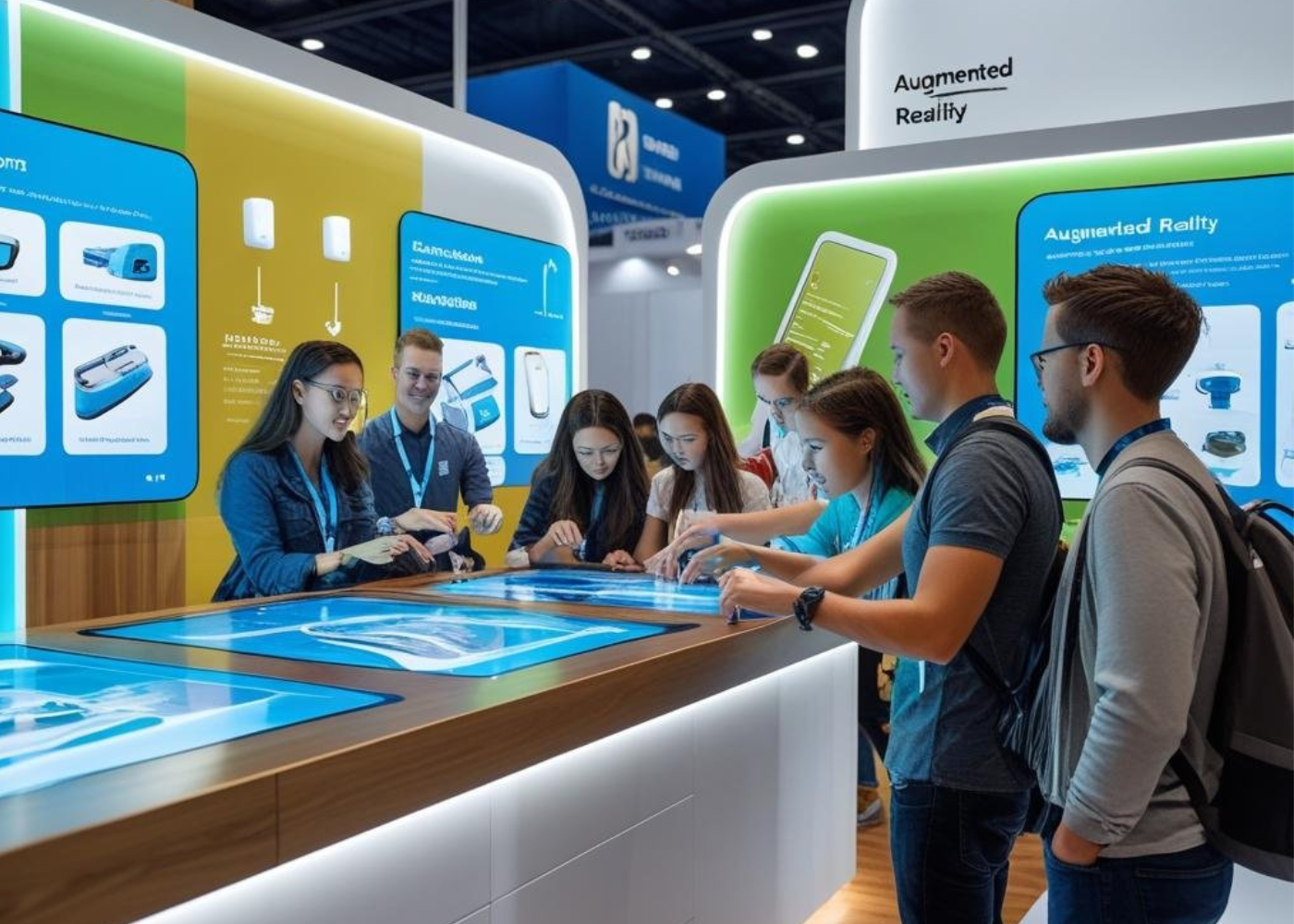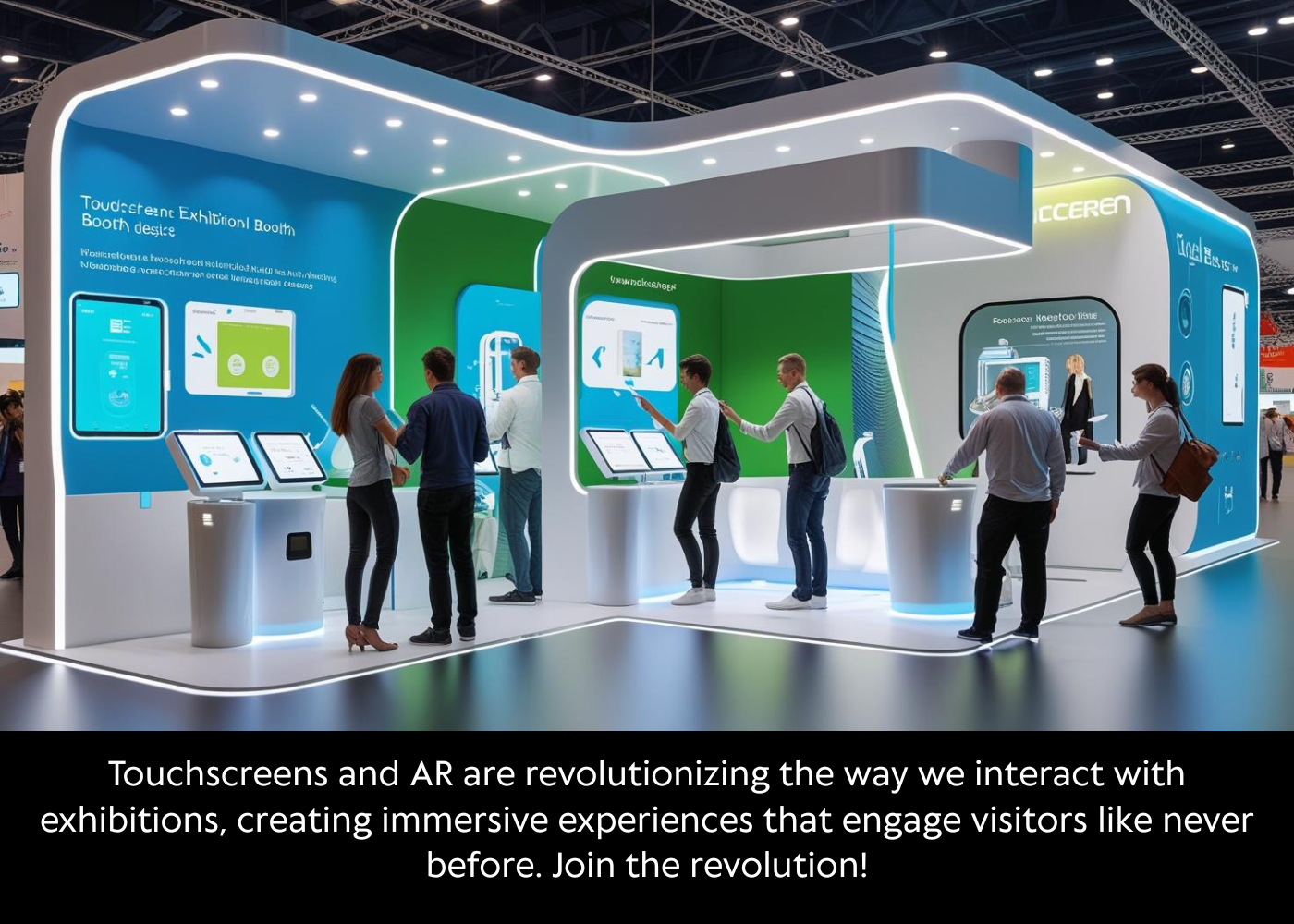Exhibition booths have come a long way from static banners and printed brochures. In today’s fast-paced, tech-savvy world, attendees expect more than just flyers—they want an experience. Enter interactive booth design, a powerful fusion of creativity and cutting-edge technology. Touchscreens and augmented reality (AR) are now at the forefront of this revolution, transforming the way brands engage with their audiences at trade shows and expos.
The days of passive booth browsing are over. Exhibitors now use touchscreens for real-time demos, product showcases, and even games. AR, on the other hand, enables attendees to immerse themselves in a brand’s story—whether it’s exploring the inner workings of a machine or visualizing how a product fits into their daily life.
This new wave of interaction doesn’t just entertain—it informs, captivates, and converts. With personalized content, data tracking, and immersive storytelling, interactive booth design is becoming a must-have strategy for modern exhibitors. But how exactly is this happening? And what makes touchscreens and AR so effective?
Let’s dive into how these tools are revolutionizing the exhibition landscape.
Introduction to Interactive Booth Design
Why Exhibitions Are Evolving
Exhibitions have always been a cornerstone of business marketing, but the way we present information and engage visitors has dramatically changed. In the past, booths were more like mini-stores—static, informative, and often forgettable. Today’s attendees, however, expect more than just pamphlets—they crave experiences that surprise and delight.
This evolution stems from shifting audience expectations and technological advancements. People are no longer passive consumers of content—they’re active participants. Attendees want to do, not just see. They want to touch, explore, and interact. This has paved the way for interactive booth design—a dynamic approach that combines physical spaces with digital experiences.
Moreover, competition at exhibitions is fierce. With dozens, sometimes hundreds, of booths vying for attention, standing out is critical. Interactive booths give companies the edge by creating memorable encounters that foster deeper connections and conversations. The goal is simple: engage the visitor, educate them, and guide them toward action—all in a few minutes.
The Rise of Technology-Driven Engagement.
Technology has always had a role in trade shows—from slide projectors to plasma screens. But today, it’s about personalization, real-time interaction, and immersive content. With the rise of mobile devices, 5G, IoT, and cloud computing, exhibitors can now deliver high-quality, responsive experiences that adapt to user behavior on the fly.
Touchscreens and AR are leading this shift. They’re accessible, scalable, and incredibly versatile. You can use them to run surveys, launch simulations, or even overlay virtual content onto real-world objects. Instead of simply telling your story, these tools let visitors live it.
Beyond aesthetics, this type of engagement drives results. People spend more time at interactive booths, they remember more, and they’re more likely to follow up afterward. Plus, these technologies provide valuable insights through analytics, helping exhibitors refine their strategies in real time.
The bottom line? Tech isn’t just enhancing exhibitions—it’s transforming them from passive displays into immersive brand journeys.


Why Exhibitions Are Evolving.
Exhibitions have always been a cornerstone of business marketing, but the way we present information and engage visitors has dramatically changed. In the past, booths were more like mini-stores—static, informative, and often forgettable. Today’s attendees, however, expect more than just pamphlets—they crave experiences that surprise and delight.
This evolution stems from shifting audience expectations and technological advancements. People are no longer passive consumers of content—they’re active participants. Attendees want to do, not just see. They want to touch, explore, and interact. This has paved the way for interactive booth design—a dynamic approach that combines physical spaces with digital experiences.
Moreover, competition at exhibitions is fierce. With dozens, sometimes hundreds, of booths vying for attention, standing out is critical. Interactive booths give companies the edge by creating memorable encounters that foster deeper connections and conversations. The goal is simple: engage the visitor, educate them, and guide them toward action—all in a few minutes.
The Rise of Technology-Driven Engagement
Technology has always had a role in trade shows—from slide projectors to plasma screens. But today, it’s about personalization, real-time interaction, and immersive content. With the rise of mobile devices, 5G, IoT, and cloud computing, exhibitors can now deliver high-quality, responsive experiences that adapt to user behavior on the fly.
Touchscreens and AR are leading this shift. They’re accessible, scalable, and incredibly versatile. You can use them to run surveys, launch simulations, or even overlay virtual content onto real-world objects. Instead of simply telling your story, these tools let visitors live it.
Beyond aesthetics, this type of engagement drives results. People spend more time at interactive booths, they remember more, and they’re more likely to follow up afterward. Plus, these technologies provide valuable insights through analytics, helping exhibitors refine their strategies in real time.
The bottom line? Tech isn’t just enhancing exhibitions—it’s transforming them from passive displays into immersive brand journeys.
The Role of Touchscreens in Exhibition Design
How Touchscreens Improve Engagement
Touchscreens have become the beating heart of interactive booth design—and for good reason. They’re intuitive, versatile, and universally familiar. Almost everyone knows how to swipe, tap, and scroll. So, when attendees approach a booth with a touchscreen, there’s no learning curve—it just works.
The key benefit of touchscreens is that they put control in the hands of the visitor. Instead of passively receiving information, users can explore content at their own pace. They can dig deeper into areas that interest them most, whether it’s product specs, customer testimonials, or videos of the product in action.
Interactive displays can host a wide variety of content:
- Product catalogs with zoom-in and rotate functions
- Quizzes that match solutions to visitor needs
- Interactive maps or timelines
- Calculators for ROI, cost-saving, or performance
This interactivity does more than just entertain—it significantly boosts retention. Studies have shown that people remember information better when they actively participate in the learning process. And when a touchscreen display allows attendees to personalize their journey, it creates a deeper emotional connection to the brand.
There’s also a practical advantage: space-saving. Traditional booths need a lot of physical material to show everything. A single touchscreen can replace stacks of brochures, posters, and printed guides, making your booth cleaner and more eco-friendly.
Types of Touchscreen Installations in Booths
There’s no one-size-fits-all when it comes to touchscreen design. The type you choose depends on your space, goals, and content strategy. Here are the most common touchscreen formats used in exhibition booths:
Kiosks and Info Panels
Touchscreen kiosks are freestanding displays designed for solo use. These are perfect for:
- Product exploration stations
- Lead capture forms
- Schedule and event directories
They’re compact, focused, and ideal for smaller spaces or one-on-one engagement. You can use them to walk visitors through a product line, sign up for newsletters, or play a quick branded game.
Touch Tables and Multi-User Displays
Touch tables take things to the next level. These are horizontal displays that allow multiple users to interact simultaneously—great for collaborative experiences.
These work exceptionally well in:
- Engineering or construction exhibits (where blueprints or designs are displayed)
- Gaming or educational booths
- Product configuration scenarios (think "build your car" or "design your kitchen")
The goal here is communal learning and engagement. Instead of one person at a time, touch tables invite group interaction and discussion, creating a more social experience at your booth.
Touchscreens can also be wall-mounted for large-scale presentations or built into custom furniture for a sleek, integrated look. No matter the format, their flexibility makes them a staple in modern booth design.

